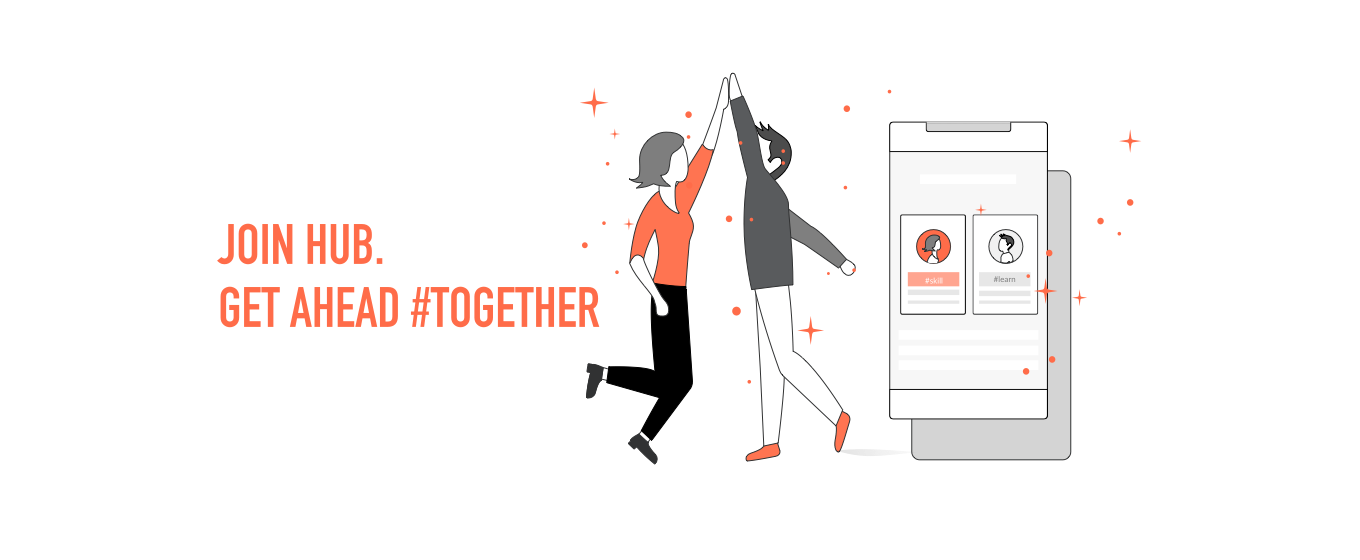 >
>Product Designer
CEO/Product Manager, Eric Ly
I joined the Hub team in October of 2018 to help build an app around professional communities. Hub is a blockchain startup in Mountain View founded by Eric Ly, LinkedIn co-founder.
The Hub product team consisted of Sally Chen (UX and Visual Designer) and Eric Ly (Product Manager and CEO).
Sally and I worked closely together on building the MVP version of the hub app. My primary focus was designing the web experience while Sally focused on mobile. Together we worked as a team to deliver a cohesive MVP across web and mobile.
At the start of the project, we wanted to understand how and why people join professional communities. Some of the questions we asked ourselves included:
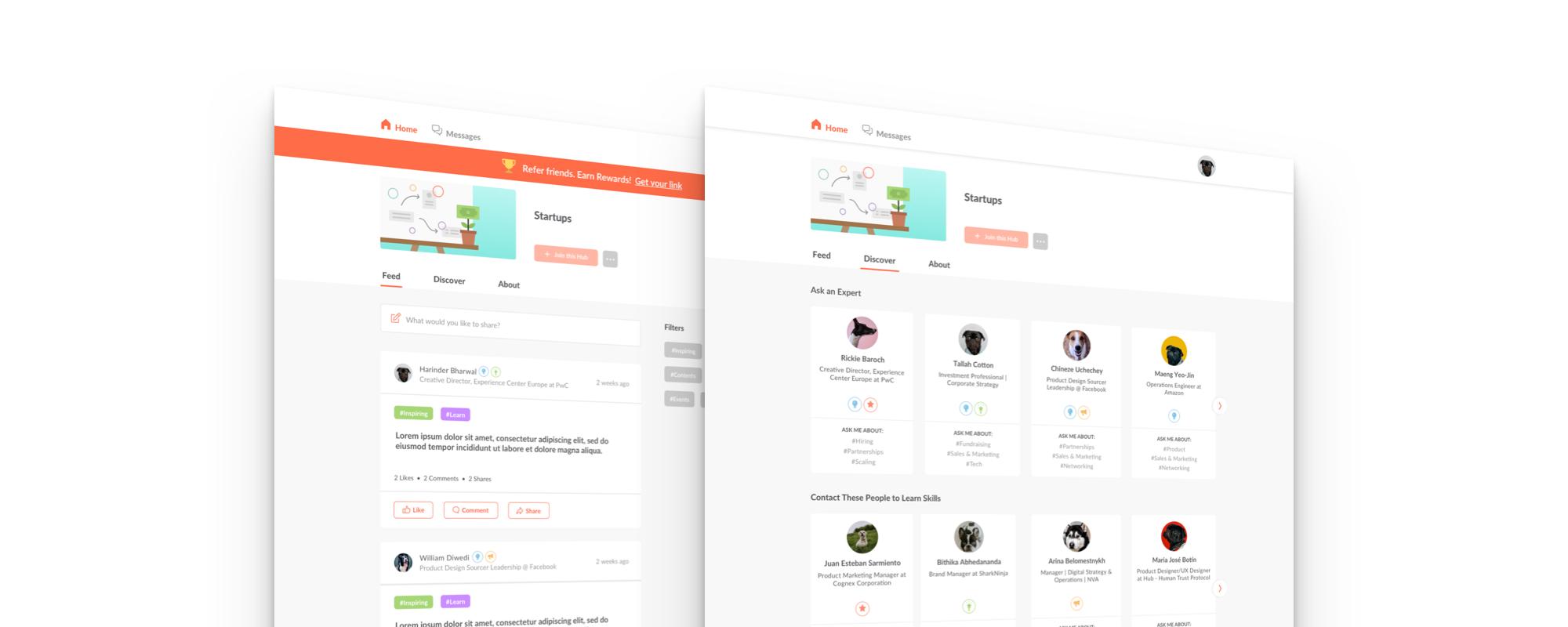
Prior to conducting user interviews, we had assumptions on the behaviors of people who participated in professional communities, as well as the different types of users. We created some proto personas based on these assumptions.These users were broken down into 3 different proto personas:
These users were broken down into 3 different proto personas:
Sally and I conducted 5 in-person user interviews. We created a user interview guide based on our assumptions to learn more about the behaviors of those in these professional communities. We collected our findings using Trello, this would be really helpful later on when we synthesized our findings.
We synthesized our research findings based on Needs, Pain Points, and Motivations. Then we categorized these findings into similar topics to narrow them down more.
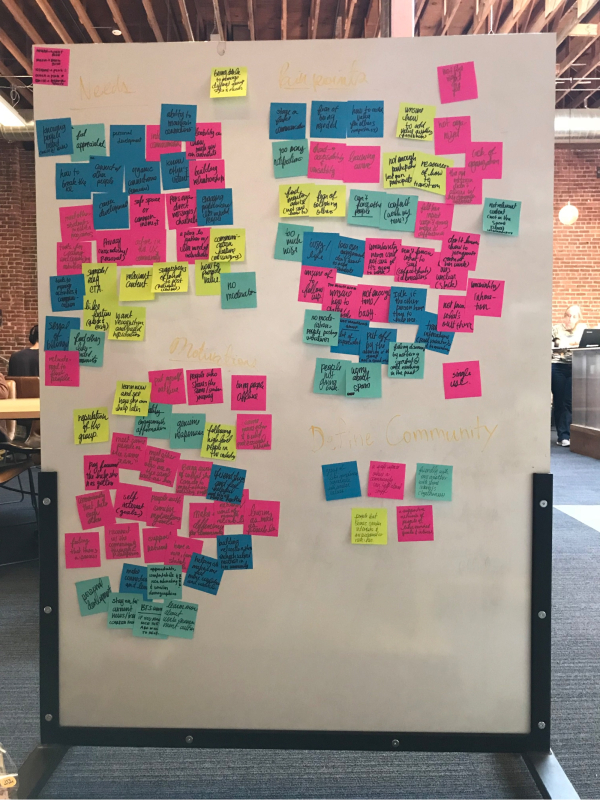

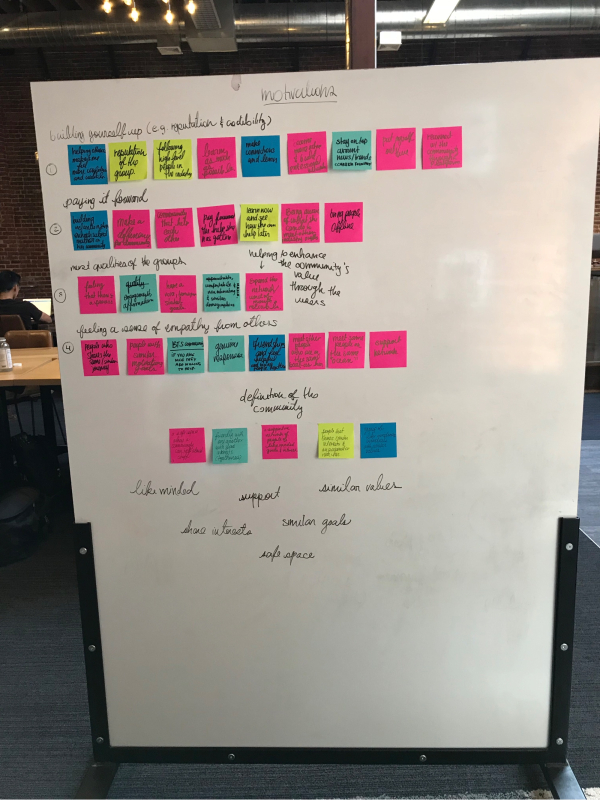



As we uncovered research insights, we developed points of view statements. From these statements we narrowed down to 3 How Might We Questions.
As we began to solve for each How Might We Question, our team ideated around each question for 2 minutes. We then clustered the similar ideas together to figure out what types of features or tools would be the most helpful. I've highlighted a few solutions for each question below.
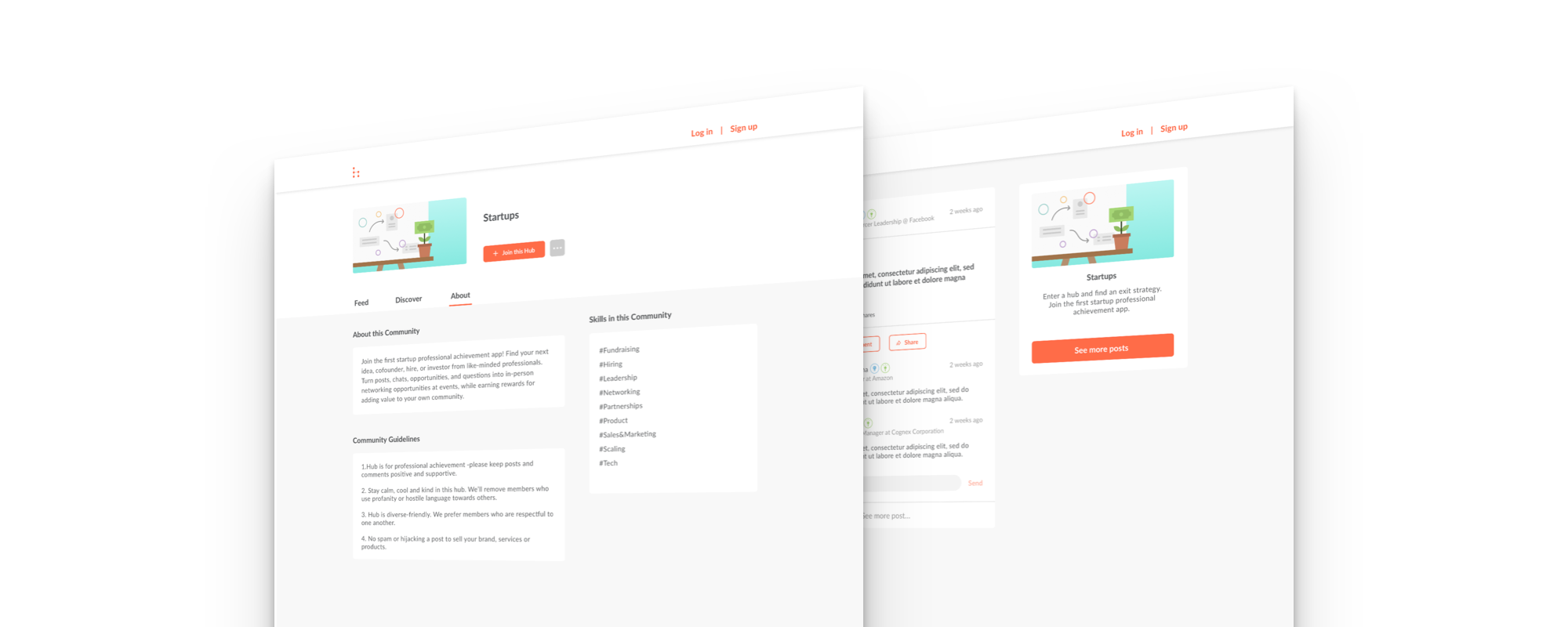
Pain Point from research:
People in professional communities are not sure if others in the community are open to messaging others.
“I’m going to feel weird I message someone and they don't respond” – Maria
“I reached out cold call to someone on LinkedIn, they didn't feel like they wanted to help so I didn't do it again” – Megan
Solution:
Allowing the user to choose why they are on Hub helps other members of the community know what they are open to.
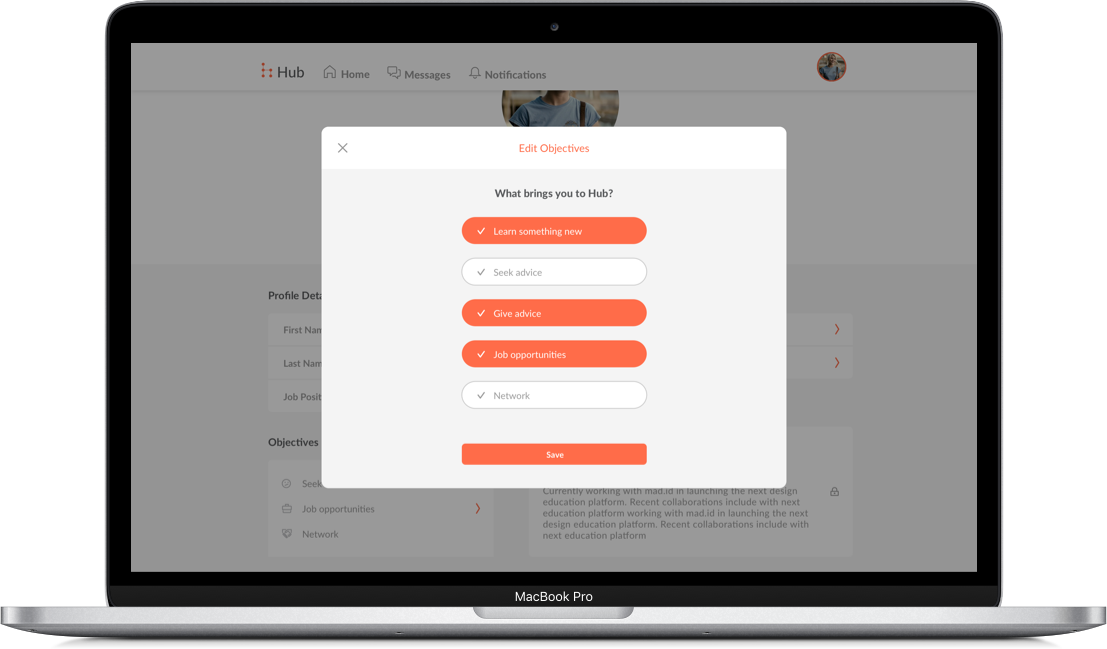
Pain Point from research:
It's hard to find relevant content on news feeds such as Reddit, Facebook, LinkedIn.
“There is too much noise on slack” – Megan
"It's hard to find links on slack because I can't remember who or when it was posted" – Denise
Solution:
When creating content, users are required to choose tags that best describe that they're posting. This helps the user to find the most relevant content.
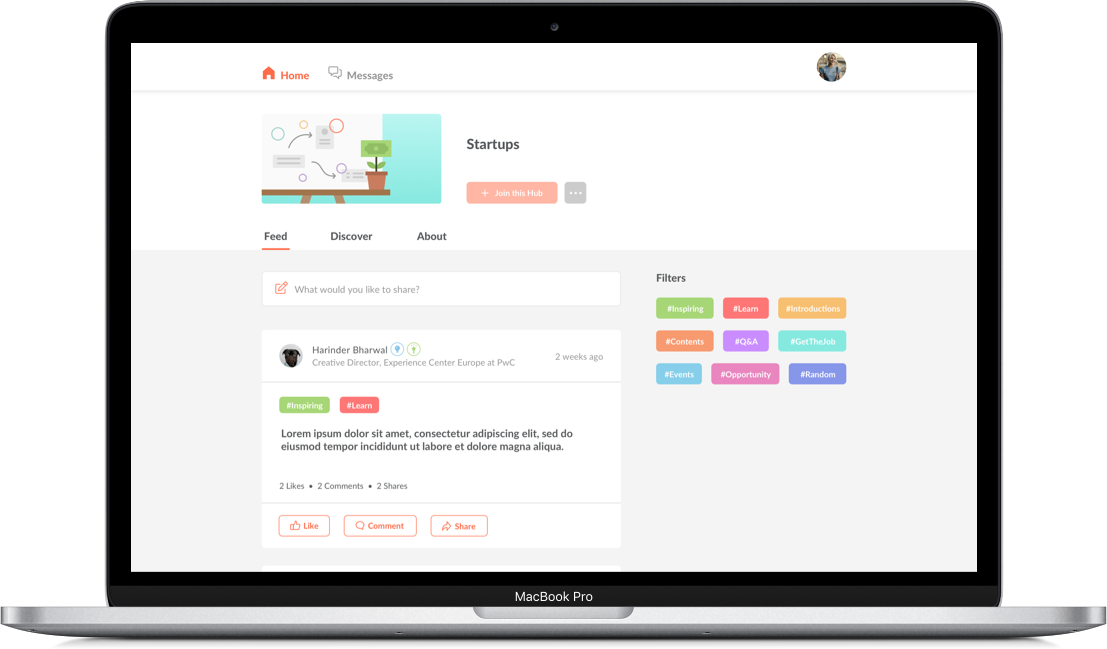
Pain Point from research:
People in professional communities often do not know who they can reach out to for help.
“I'm trying to learn as much as possible” – Suzanne
"I want to give back to my community because I know how it feels to go through this journey" – Olivia
Solution:
When joining a Hub, users can choose skills they want to share and skills they want to learn. This helps everyone in the community see how they can help others, as well as see who they can learn from.
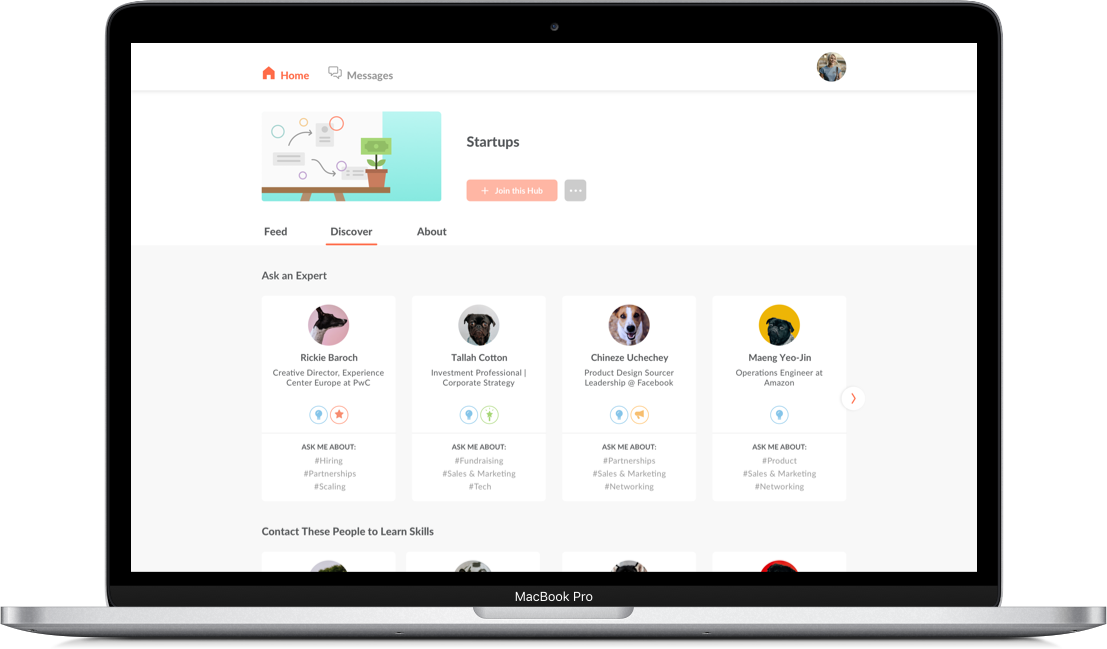
Throughout the development of designing Hub's MVP, I was faced several challenges; some of these challenges I had experienced in my past roles. Some things I learned throughout this process include:
Effectively communicating with stakeholders, I learned quickly how crucial it is to have clear reasoning behind why you made certain design decisions. Sometimes showing user research that addresses a certain pain or showing an example of how a design pattern is used elsewhere can help stakeholders visualize and understand your thought process.
Time allocation, because of Hub's MVP deadline, our team had to make compromises on what features we would include, and what features we could live without. There were some features the design team wanted, but would take engineering too long to implement. In these cases, we would try to come up with a different feature that could accomplish the same goal and take less time.
Collaboration, the team at Hub was small, so collaboration between the designers, product team, stakeholders, and engineers is ongoing. Some takeaways I have here are getting engineering input early on. This helps the engineers anticipate what might be coming down the pipeline or even coming up with a different solution.
For any other questions about this project or anything else, please contact me at hello@joannajliu.com.